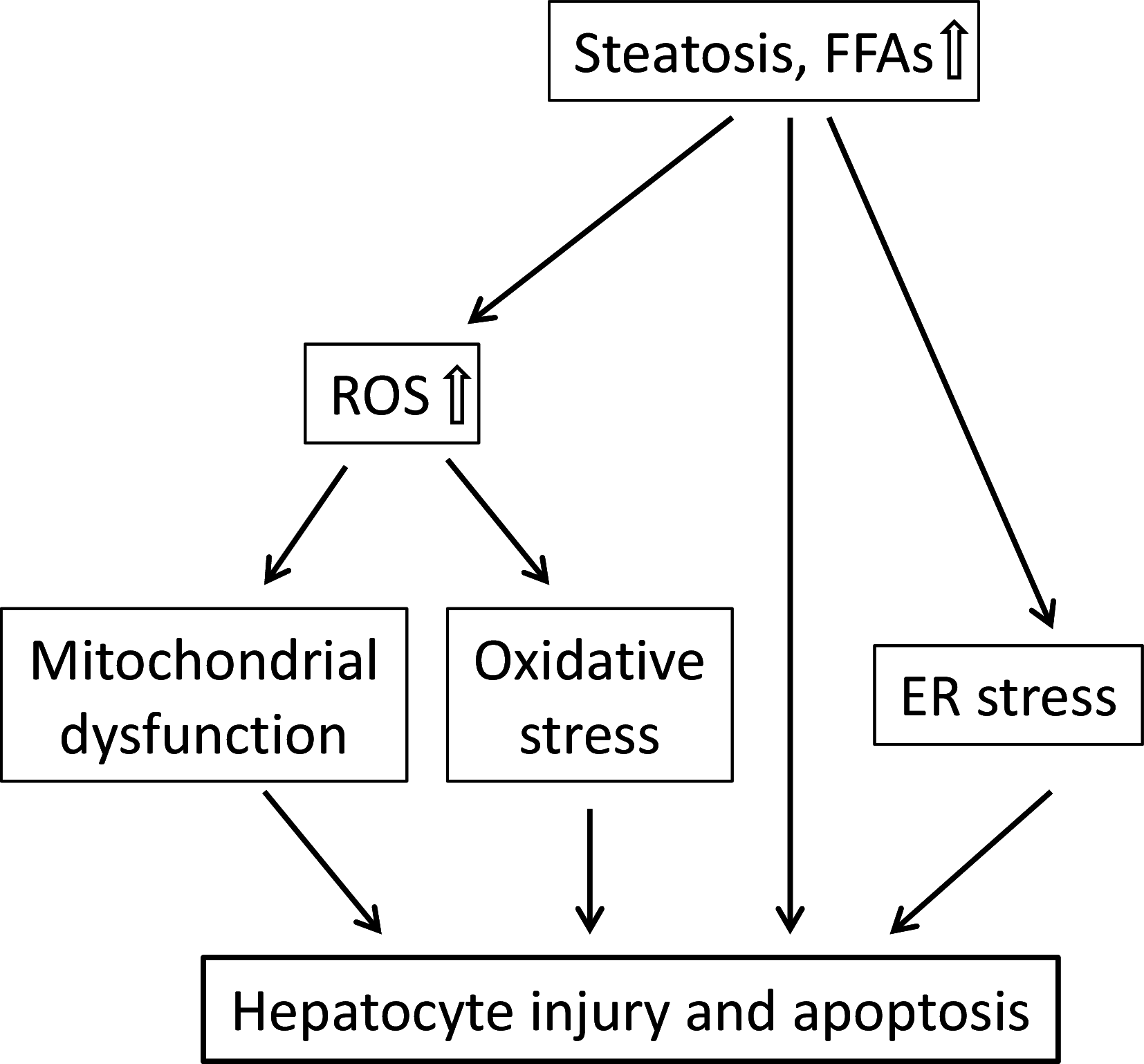Pathogenesis of nonalcoholic steatohepatitis
- PMID: 26894897
- PMCID: PMC11108381
- DOI: 10.1007/s00018-016-2161-x
Pathogenesis of nonalcoholic steatohepatitis
Abstract
Nonalcoholic steatohepatitis (NASH) is a severe form of nonalcoholic fatty liver disease and a risk factor for cirrhosis and hepatocellular carcinoma. The pathological features of NASH include steatosis, hepatocyte injury, inflammation, and various degrees of fibrosis. Steatosis reflects disordered lipid metabolism. Insulin resistance and excessive fatty acid influx to the liver are two important contributing factors. Steatosis is also likely associated with lipotoxicity and cellular stresses such as oxidative stress and endoplasmic reticulum stress, which result in hepatocyte injury. Inflammation and fibrosis are frequently triggered by various signals such as proinflammatory cytokines and chemokines, released by injuried hepatocytes and activated Kupffer cells. Although much progress has been made, the pathogenesis of NASH is not fully elucidated. The purpose of this review is to discuss the current understanding of NASH pathogenesis, mainly focusing on factors contributing to steatosis, hepatocyte injury, inflammation, and fibrosis.
Keywords: Apoptosis; Autophagy; Genetic predisposition; Gut microbiota; Hepatic stellate cells.
Figures
References
Publication types
MeSH terms
Substances
LinkOut - more resources
Full Text Sources
Other Literature Sources
Medical





